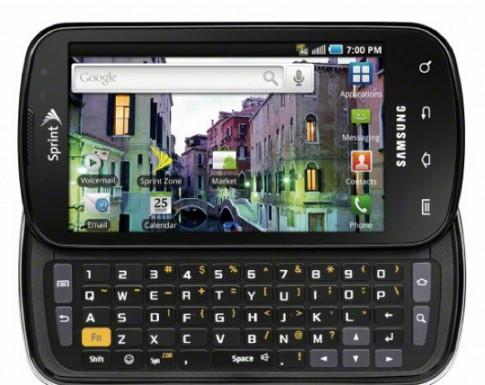
What's Good: Big, beautiful display; Roomy five-row QWERTY board with good tactile feedback; 3G/4G/WiFi connectivity; Dual cameras; Responsive controls and speedy performance.
What's Bad: Samsung's custom skin doesn't add much to Android and can't be disabled; Plastic materials feel cheap; Sprint's 4G service isn't everywhere and their 3G speeds can be slow; $249 price tag is high, and $10/month Premium Data add-on fee is mandatory.
The Verdict: Samsung Epic 4G might just be the best Android phone, nay the best smartphone, in the world if you want every feature imaginable backed by toucshcreen and hard QWERTY input. Epic has its flaws, but all in all is the first top shelf Droid in the U.S. for hardcore business users.
NOTE: Due to the similarities between the devices, portions of this review also appear in my review of the Samsung Captivate (AT&T).
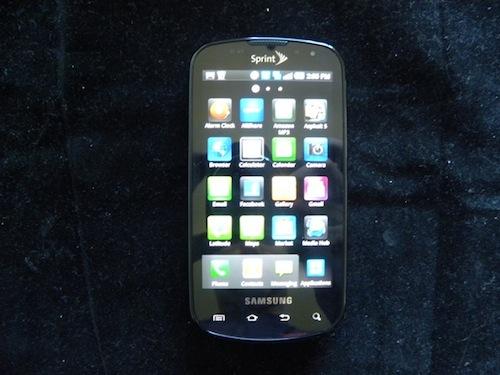
Samsung's family of Galaxy S smartphones is spreading across the globe en masse this Summer, and Sprint's Epic 4G follows T-Mobile's Vibrant and AT&T's Captivate as the first models to launch on US carriers. Adding a hard QWERTY board, WiMax compatibility, and a few other features to the Galaxy S recipe, Epic 4G packs a 4" screen with Super AMOLED technology, 1GHz custom processor, and Android 2.1 OS paired with Samsung's own TouchWiz 3 user interface. Epic 4G stands out from the pack due mainly to that side-sliding thumbboard and 4G connectivity, and it's got the feature set to go gunning for the big boys of the power smartphone set.
Thicker and heavier than its touchscreen-only brethren, Epic still manages to keep a low (and light) enough profile to maintain a reasonable degree of "pocketability." Though the phone has a somewhat cheap, plasticky feel to it, and Samsung's custom software suffers from a general lack of elegance, this is still a top-notch smartphone for the Web and Social Media crowd that's brought up to Business Class thanks to a very usable QWERTY board. And if you live, work, or travel often to Sprint 4G coverage areas, Epic's desirability is ratcheted up by WiMax compatibility backed by optional Sprint Hotspot wireless tethering.
As mentioned, Epic 4G stands apart from the rest of the US-bound Galaxy S lineup thanks to its hard QWERTY board. The phone more or less resembles a global Galaxy S with more acutely rounded corners that's been doubled in thickness by that second, QWERTY-packing layer. Epic isn't actually double the thickness of the other Galaxy phones, though: It measures 14.2 mm, or just over one-half inch, from front to back, while T-Mobile's Vibrant is 9.9mm thick. Measuring up at 125 x 65 x 14.2 mm and tipping the scales at 155 grams, (5.46 ounces), Epic is larger overall but lighter than Motorola's Droid 2 for Verizon, its most direct competitor in the US. It's also wider and heavier than Sprint's other 4G device, the HTC Evo 4G. Yet Epic doesn't feel all that bigger than Evo in regular use - there's something about the extra-curved corners that makes the device feel smaller than it is, and there's something about knowing you've got a full-on keyboard in your pocket that makes you feel like the extra size is essential, and not ungainly.
Epic's large footprint is attributable to its 4", 800 x 480 resolution, Super AMOLED display. The capacitive, multitouch-aware screen takes up most of the front panel of the phone, save for a logo, LED status light, VGA camera and some sensors above it and another logo and a row of four touch-sensitive buttons below. The top of the device features a 3.5mm headphone jack and a microUSB port covered by a neat sliding plastic door, and there's a rocker switch on one spine of the phone and a lock/power and camera buttons on the other. You get a 5 megapixel camera with HD video capture and flash on the back of the phone, mounted in a soft-touch grey plastic panel with a bit of a chin towards its bottom edge.
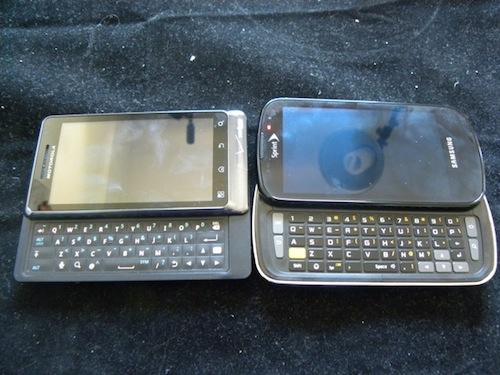
Turn the device sideways and slide the top panel open until it locks assuredly into place, and that five-row QWERTY board is revealed. While not quite up to the state-of-the-art standards of HTC's Touch Pro2 or the best BlackBerrys, Epic 4G's thumbboard is still quite satisfying to behold and use. The overall width of the phone - again thanks to that 4" display - affords room enough for five rows of individually isolated keys flanked by four buttons (two on either side of the main layout) that replicate the Menu, Back, Home, and Search controls on the lower edge of the touchscreen's bezel. The keyboard also features a row of dedicated numerical keys, separate Function, Shift and Emoticon buttons, a double-wide Space bar and a four-button cursor layout - all good things. Buttons are large enough for accurate typing, have ample travel and tactile feedback to feel good, and suffer from only minimal "double click mush," as I so professionally like to call it.
Epic 4G comes with a USB cable, modular charger, stereo headset with multiple ear sleeves, and manuals in its box. An external docking station and battery charger are also available separately. You also get a 16GB microSD card preinstalled in the device to compliment 1GB of on-device RAM. The phone also features 512MB RAM and is powered by the aforementioned 1GHz Samsung Cortez A8 Hummingbird Application Processor. In lay terms, Epic has different, but similarly fast capable innards than the Evo 4G (which packs a 1GHz Qualcomm Snapdragon processor).
Samsung's take on Android has evolved some over the past few years, and Epic 4G comes with the latest version of their TouchWiz user interface installed as part of the Android 2.1 operating system. TouchWiz makes Android look a lot like iPhone's iOS, with similar looking icons arranged into a similar looking grid with a similar looking four-icon dock at the bottom of the home screens. The result is a user experience that's arguably more novice-friendly than standard Android, but also arguably less attractive. Personally I'd argue in favor of plain ol' Android 2.1 (better yet, 2.2) instead of TouchWiz, but custom skins seem to be the current favored method of making your Google Phone stand out from the pack, so I guess we have to live with 'em for the time being. A 2.2 "FroYo" update has been promised in the coming months, no doubt with TouchWiz 3.x still firmly in place.
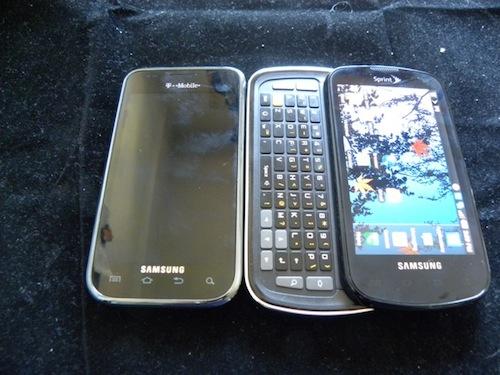
Epic 4G just about does it all, and it should rightfully be included in any "Best Phone in the World" discussions for the time being. Reception and call quality have been solid during testing in San Francisco, Oakland and Berkeley, CA, and the phone functions equally well via "normal" speaker, speakerphone, or wired/wireless headset. Like its Galaxy S stablemates, Epic 4G moved from app to app, from pinch to zoom, and from still photo viewing to video playback with nary a hiccup, and I delighted in nice download speeds while browsing the Web and pulling down Email attachments.
When I reviewed T-Mobile's Galaxy S phone, the Samsung Vibrant, I noted that data speeds were pretty good but they'd be even better if I was within range of T-Mo's HSPA+ network. Ditto for Epic, but with a twist: To get the most out of Epic's data capabilities, you'll want to use it on Sprint's 4G network, which achieves real-life performance that's up to three time's as fast as their 3G speeds Unfortunately for me, Sprint hasn't yet lit up the Bay Area with WiMax, so I was stuck using Epic on their 3G network, which was solid but kind of slow. Speed tests generally clocked between 1 and 1.1 Mbp/s down, and real world tests like loading Web pages showed Epic on Sprint to be a half-step slower than Vibrant on T-Mo or Droid 2 on Verizon. Most of the time, anyway.
Battery life was pretty decent given the size and brightness of that display - I regularly got through the day without having to recharge the device before bed, which is on par with iPhone 4 and a bit better than HTC's Evo 4G and Droid Incredible. Under extra heavy usage, Epic lasted until late afternoon/dinner time, which again is better than Evo and Incredible. Extended use of the Sprint Hotspot mobile router app drained Epic's battery right quick, which is to be expected. Expect even worse if you're using Hotspot via 4G.
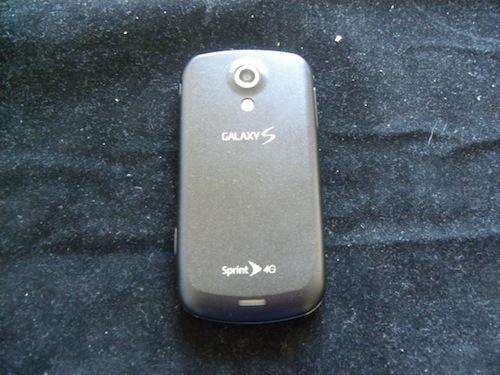
Media playback on Epic 4G was terrific. High quality video clips look spectacular on the device thanks to the Super AMOLED tech, which is bright and vivid like AMOLED but more usable in direct sunlight. And get this: Epic actually supports more video CODECS than Evo 4G, arguably making it the most multimedia-proficient device in Sprint's current lineup. Photos and videos captured with Epic are of above average quality so long as they're shot in decent lighting, though this phone trumps the other Galaxy devices with its LED flash, that's reasonably useful so long as your subject is within close range (and you're not expecting stand-alone camera performance). 720p HD video in particular was quite impressive, notching in just below iPhone 4's camcorder in my utterly non-scientific tests. Built-in wired and wireless sharing makes it possible to zap your media to a PC or HDTV for family viewing, and a Samsung's Media Hub is really, truly bringing streaming/downloadable video content to Galaxy S phones in the US any day now.
Samsung's custom software is interesting, if not altogether great. On the one hand you've got a pretty plain jane user interface that offers up seven home screen panels, live wallpaper support, a home screen dock and a bunch of extra widgets and apps, a few of which (Daily Briefing, Buddies Now) are actually kind of handy. On the other hand the look and feel of TouchWiz is way more cartoon-like than elegant, you can't opt-out of the custom skin in favor of stock Android, some of the widgets are pretty half-baked, Samsung's English language labels and dialogue boxes are full of weird diction and grammatical errors like, "And then you can see the new feeds on the idle by widget" (from the Twitter Sync dialogue). Unlike Vibrant, which flat out refused to connect to my Mac in mass storage mode, Epic connected just fine, allowing me to sideload media files. Unfortunately, when I dismounted the phone, my computer Kernel Panicked. That's the OS X equivalent of Windows' Blue Screen of Death, for the uninitiated. I had no issues connecting Epic to a WIndows 7 laptop via USB.
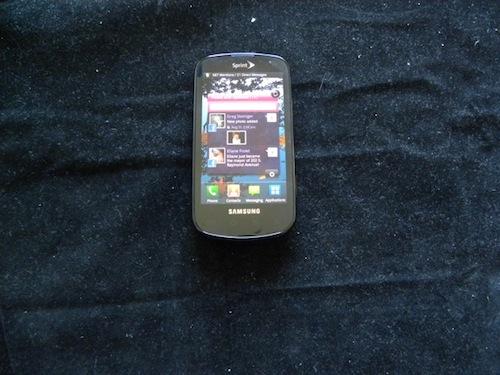
Sprint added a few goodies to Epic's App mix, including Sprint TV, the carrier's NFL and NASCAR apps, and Qik video chatting/streaming. Qik works quite well for two-way video chatting via Epic's front facing camera; it's not as slick as Apple's FaceTime system, but it works with many more devices. Epic 4G also comes with Swype, which is fast catching on as a "better than typing" text input solution for touchscreens, because you won't always want to deploy the hard QWERTY board to fire off a TXT. Oh, and while Epic's YouTube app lacks the giant "HQ" button found on other recent Android devices, high quality YT viewing is accessible via the app's Menu -> More settings. Ah, the joys of Android fragmentation!
Frankly, I'd love to get my hands on Epic 4G - or any Galaxy S phone - running a fully open, stock version of Android OS 2.2 with access to Samsung's widgets to use or not as I see fit. TouchWiz doesn't do much for me, though I can see the Android newbie or first-time smartphone buyer being attracted to Vibrant's colorful array of icons and iPhone-like dock. Still, Android 2.2 is faster than 2.1, and given Samsung's history of pushing out updates, I'd be more comforted by an Epic 4G that shipped with 2.2 installed than numerous promises of "Update coming soon!"
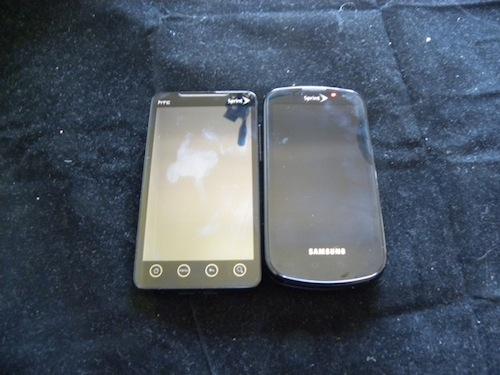
Fast smartphones with big displays and lots of features are a dime a dozen these days. While there's a trend underway towards extreme devices with 4.3" displays and thin profiles, I personally think a somewhat smaller device with a screen in the 3.5-4" range is a better fit for most people - literally and figuratively. There's also a trend that's moving away from hard QWERTY keyboards in favor of touch-only input. While touchscreen hardware and multitouch software is getting better all of the time, there's still a market for good ol' fashioned push buttons, at least for a little while longer.
Samsung and Sprint have taken all of the above and then some and packed them into the new Epic 4G, an Android phone that stands apart from its Galaxy S siblings with 4G speeds, an excellent side-sliding keyboard, and a few other extra goodies. I always say that there's no "best" phone for everyone, and I will continue to stand by that: Some like a QWERTY board, some like webOS instead of Android, some like a giant display, and so on. Bearing that in mind, though, I will say that Epic 4G comes about as close to finding the perfect blend of features, performance, and mobility as smartphone ever has. The screen is brilliant, the QWERTY is excellent, and the performance is generally top-notch.
Sprint needs to blanket the rest of the country with 4G connectivity. Samsung needs to push an Android 2.2 update out to Galaxy S owners. And somebody needs to deploy a worthy desktop solution for managing media on Android devices. Until then, I can find flaws with Epic 4G. But the flaws are few. If you want it all, physical QWERTY included, and you want it all in one smartphone, Epic 4G should be on your short list - It's an excellent device, period.